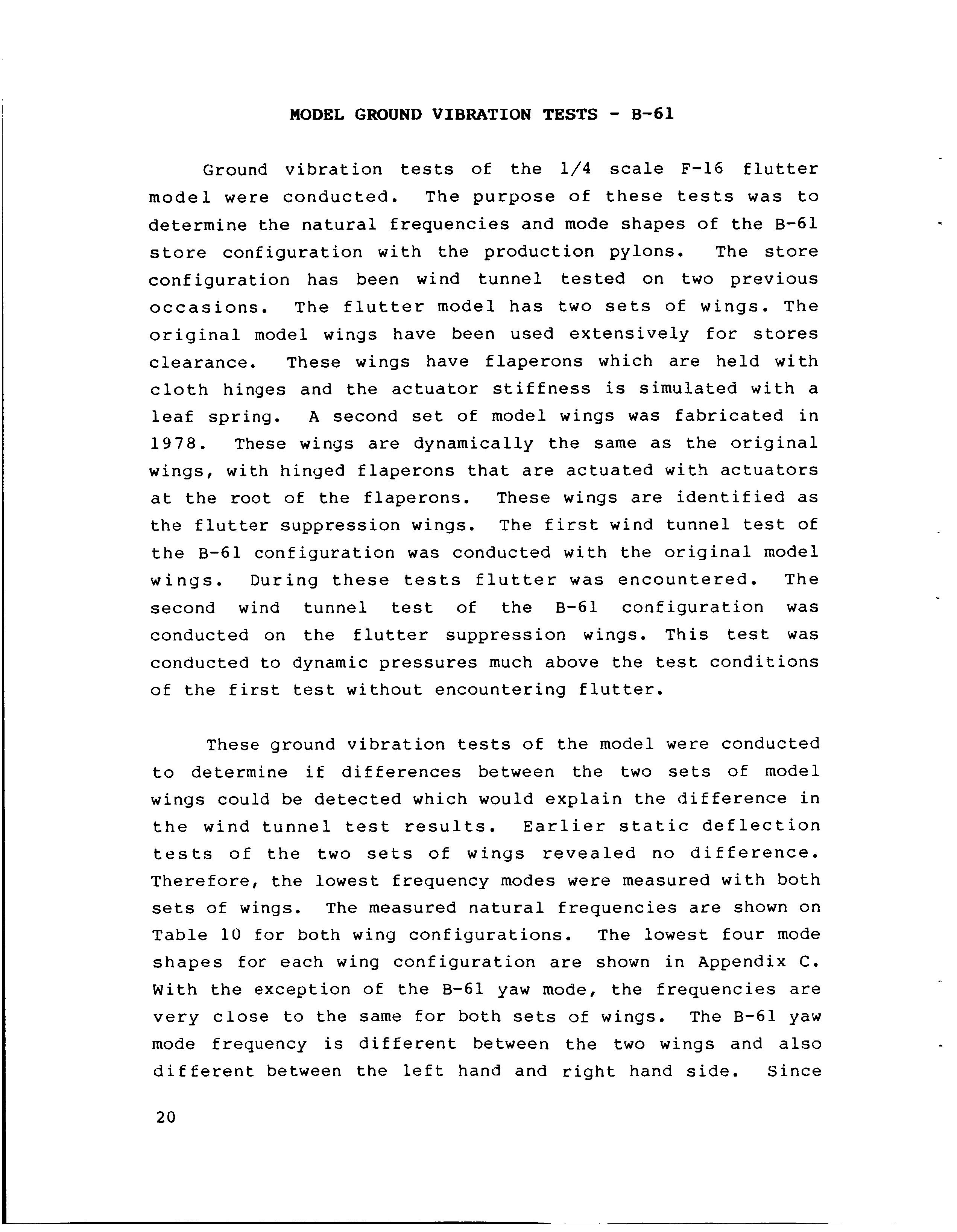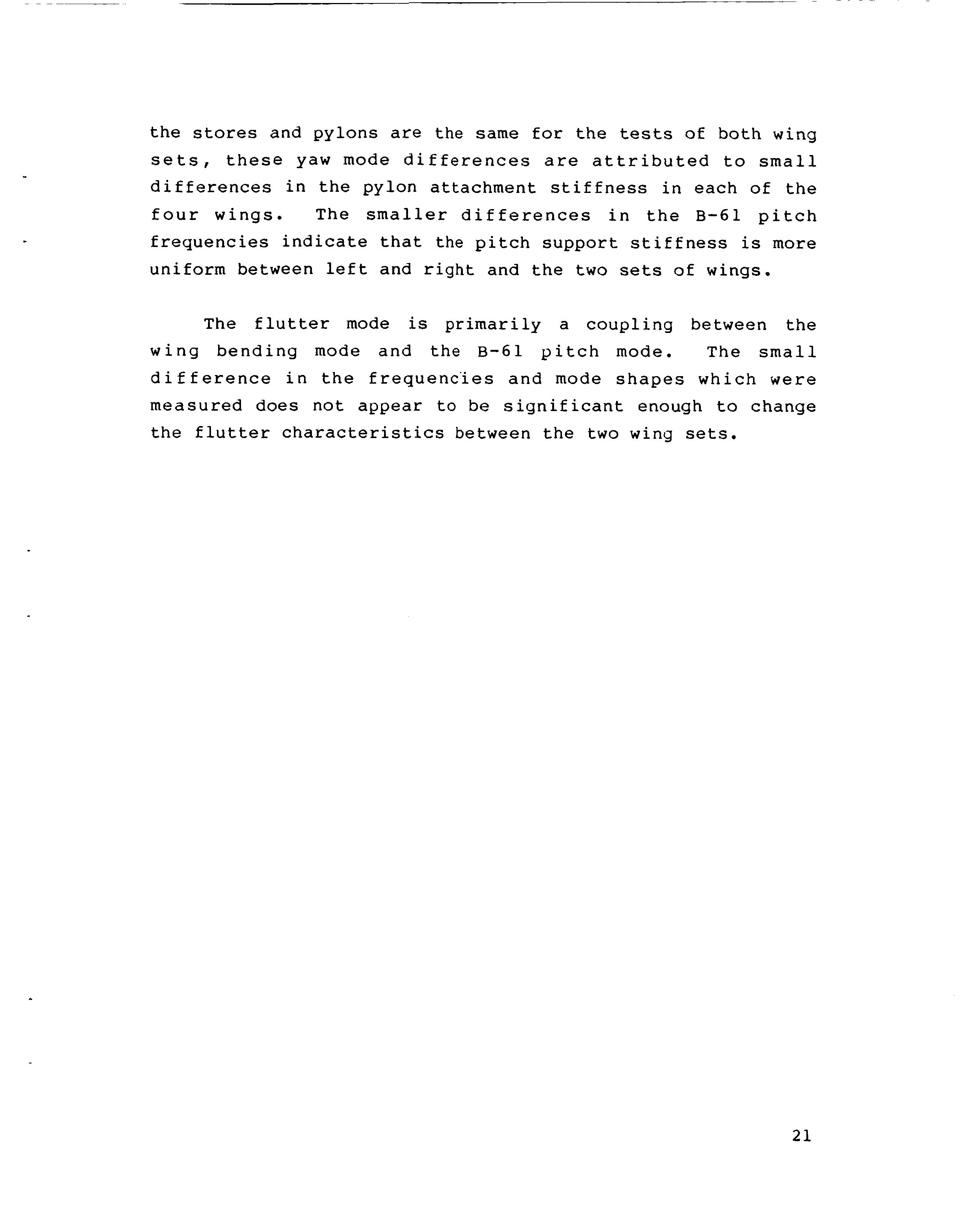
2 minute read
MODEL GROUND VIBRATION TESTS B-61
from NASA Technical Reports Server (NTRS) 19870001427: Design and fabrication of the NASA decoupler pylon
MODEL GROUND VIBRATION TESTS - B-61
Ground vibration tests of the 1/4 scale F-16 flutter model were conducted. The purpose of these tests was to determine the natural frequencies and mode shapes of the B-61 store configuration with the production pylons. The store configuration has been wind tunnel tested on two previous occasions. The flutter model has two sets of wings. The original model wings have been used extensively for stores clearance. These wings have flaperons which are held with cloth hinges and the actuator stiffness is simulated with a leaf spring. A second set of model wings was fabricated in 1978. These wings are dynamically the same as the original wings, with hinged flaperons that are actuated with actuators at the root of the flaperons. These wings are identified as the flutter suppression wings. The first wind tunnel test of the B-61 configuration was conducted with the original model wings. During these tests flutter was encountered. The second wind tunnel test of the B-61 configuration was conducted on the flutter suppression wings. This test was conducted to dynamic pressures much above the test conditions of the first test without encountering flutter.
Advertisement
These ground vibration tests of the model were conducted to determine if differences between the two sets of model wings could be detected which would explain the difference in the wind tunnel test results. Earlier static deflection tests of the two sets of wings revealed no difference. Therefore, the lowest frequency modes were measured with both sets of wings. The measured natural frequencies are shown on Table Ill for both wing configurations. The lowest four mode shapes for each wing configuration are shown in Appendix C. With the exception of the 8-61 yaw mode, the frequencies are very close to the same for both sets of wings. The B-61 yaw mode frequency is different between the two wings and also different between the left hand and right hand side. Since
20
the stores and pylons are the same for the tests of both wing sets, these yaw mode differences are attributed to small differences in the pylon attachment stiffness in each of the four wings. The smaller differences in the B-61 pitch frequencies indicate that the pitch support stiffness is more uniform between left and right and the two sets of wings.
The flutter mode is primarily a coupling between the wing bending mode and the B-61 pitch mode. The small difference in the frequenc'ies and mode shapes which were measured does not appear to be significant enough to change the flutter characteristics between the two wing sets.
21











